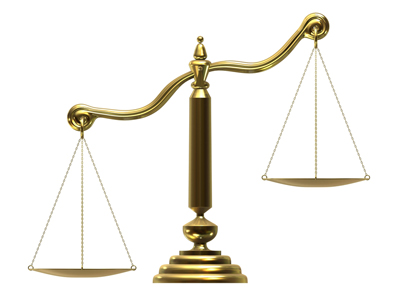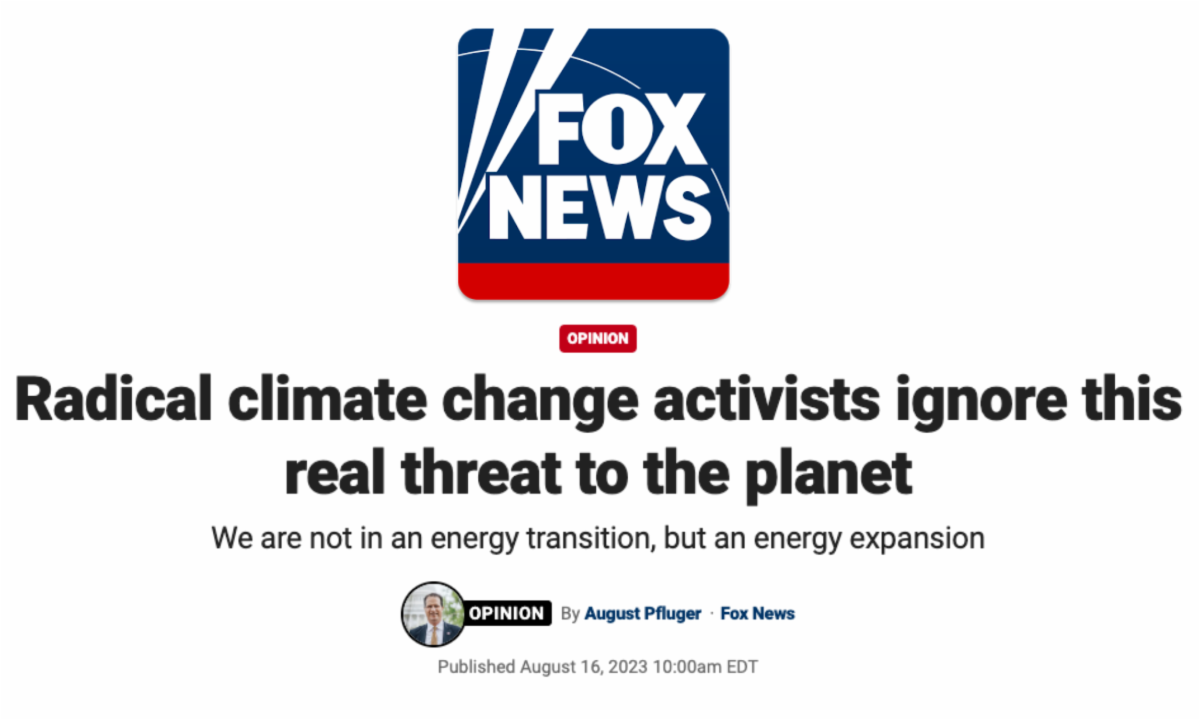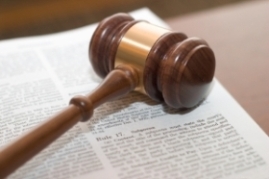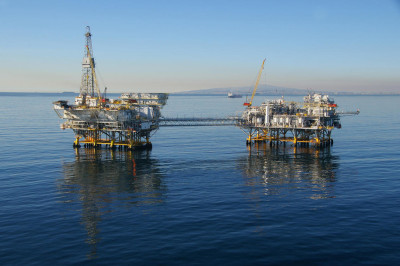Show Me The Money: Climate Change Litigation in the Beginning
The Legal Wilderness
Dedicated to Searching and Exploring our Legal Frontiers to Find, Categorize, and Tag the wild, Untamed and Predatory Applications of the Law
SHOW ME THE MONEY!!
Remarks of Joseph F. Speelman before the
5th Annual Judicial Symposium of Civil Justice Issues
addressing over 250 Federal and State Judges at the
George Mason Judicial Education Program.
George Mason University School of Law
Arlington, Virginia
December 5-7, 2010.
Climate Change Litigation in the Beginning
 Good morning. I have spent thirty-one years as in-house counsel, representing large manufacturing corporations in the United States; including nineteen years as Chief of Litigation at the third largest chemical manufacturer in the world. My friend and colleague, plaintiff counsel Mr. Mayer said just now, “it’s not a money making venture.” That’s baloney. This is all about money. We just heard the exchange. This whole thing is about money. I’m going to talk to you in the next few minutes about two of the largest transfers of wealth ever in our country’s history. Then, I’m going to finish by talking about Climate Change Litigation, which is the issue today…and which will be the largest transfer of wealth proposed in the entire world…ever.
Good morning. I have spent thirty-one years as in-house counsel, representing large manufacturing corporations in the United States; including nineteen years as Chief of Litigation at the third largest chemical manufacturer in the world. My friend and colleague, plaintiff counsel Mr. Mayer said just now, “it’s not a money making venture.” That’s baloney. This is all about money. We just heard the exchange. This whole thing is about money. I’m going to talk to you in the next few minutes about two of the largest transfers of wealth ever in our country’s history. Then, I’m going to finish by talking about Climate Change Litigation, which is the issue today…and which will be the largest transfer of wealth proposed in the entire world…ever.
It’s about the money. Twenty years ago, Stuart Altschuler wrote an article that was entitled, Usurping Regulatory Power Through Mass Tort Litigation. 1. In that visionary article, written so long ago, everything that has happened and that we discuss today, was predicted by Mr. Altschuler. The idea expressed by the Natural Resources Defense Council and other NGOs was that they didn’t like democracy because it didn’t get them what they wanted, and so they were going to use the courts and the judicial system to run the American political process – a fundamentally anti-democratic philosophy that they have consistently maintained – and might I add – relatively successfully.
Now, during my nineteen years as Chief of Litigation, it has been my privilege to retain both Mr. Mayer from Susman, Godfrey and Mr. Faulk from Gardere Wynne to represent my client. That having been said, the real title of my talk today should be – since this is about climate change and it’s in December, is “Baby it’s Cold Outside”, but I chose “Show Me The Money” for reasons you have begun to surmise I am sure. Really, it’s more about the following: from those people who brought you asbestos and tobacco, we’re on the cusp of the largest proposed transfer of wealth in the entire world, and you as judges, are being asked to do it.
I would ask you to step back, talk to your colleagues, and let’s have a second – a quiet, rational long second thought about this process. I have been quoted in the past as saying the American tort system is broken, and it is. We have commoditized the law in the process to the point that we have the following absurd results. In tobacco, we had the largest transfer of wealth in this country. It’s still going on, and what did we accomplish? More young girls smoke cigarettes now than ever before. Cigarettes are not gone and, in fact, they are guaranteed they are going to be around for a long time. Why?
Because the annuities created in favor of the American plaintiff’s bar require funding from non-bankrupt tobacco companies. Therefore, the cost of tobacco and cigarettes has gone up ridiculously. They’re still around. They’re making money, and they’re paying their annuities to the American plaintiff bar. We still have smoking, and we still have cancer deaths. As I’ve said before, more young girls smoke now than ever before. It that the way this is supposed to work? What did we accomplish as a society? Nothing. But we did transfer wealth to a few people. What did they do with the wealth? Well, there’s always asbestos.
I recently had the opportunity to watch a Chapter 11 bankruptcy proceeding in New York City. In that proceeding, a lawyer from Texas filed 285,000 proofs of claim for asbestos liability against the Debtor; 285,000 claimants asserting that the lawyer represented all 285,000 of them and they were all injured. The bankruptcy judge, being a good judge and a judge that’s been around a while, granted the defendant’s Lone Pine style motion to seek some more clarification about the claims. Do you really represent all these people? Are they really injured? Did the debtor cause that injury? Seven days after that order was granted, which was a fair order, all 285,000 claims were withdrawn.
Subsequent to that, several letters come in from a number of those 285,000 people that said, “I saw my name listed, and some lawyer in Texas said that he represents me. Can you tell me how I can get a hold of this person because I don’t know him and I have never met him?” The commoditization of the law in aggregative torts and the resulting abuse is unbelievable. Who pays for that? Well, one of the things that businesses try to do is make money. Businesses are being exhorted to hire people. We need to reduce unemployment. Why isn’t business hiring people? For twenty years , I’ve watched business leaders, most of who are engineers, in manufacturing and production sectors of our economy struggle to turn a profit. I always tell young attorneys or law students, “If you’re going to go into the law, and you’re going to go in-house, understand that you will live in a “nest of engineers” because engineers are wonderful people who make things, and many of them end up being business leaders.” Engineers have a very rational and direct thought process. To try to explain the law and the consequences we experience today is a challenge because they don’t understand it. They are very principled and intellectual people. The typical comment I might get is “But we didn’t do anything wrong. Didn’t we abide by the law?” “Yes” “Why are we being sued? Why is this liability before us?” Judges, please, tell me what is the answer to that?
The simple answer is that about every two or three years the people that brought you asbestos and tobacco come up with new ideas, predatory ideas. They’re designed to separate money from companies and the American commerce system and take it somewhere else. Now, try to explain that to your client. Put yourself in my posture. The only way I can safely advise a client to avoid liability in this environment is to not make, buy, sell, or insure anything – that would make it really hard for us to do what Administrations ask business to do, which is to hire people….oh, and make money.
Is it American business’s responsibility to deal with the change in the climate of this world? Let me talk about that for a minute. The theory is public nuisance, and it’s a novel theory, but I want to give you some comments from people who had a lot to do with creating that theory. Professor James Henderson, from Cornell University, is a co-reporter fro the Restatement Third on Products Liability which includes language that we all rely upon for public nuisance. There has been litigation for almost 30 years now on lead, and involving people who are responsible for lead paint.
Lead in paint was, in fact, required by government building standards fifty years ago; but now somebody says, “Oh, this is a horrible thing. We need money.” So litigation ensues. Before the Rhode Island Supreme Court, Professor Henderson, in the most powerful 13 page amicus brief you will ever read, termed the theory of public nuisance the way it’s being used now, as simply lawlessness – nothing less that pure lawlessness. Standardless liability. This is the man that wrote the language on public nuisance, but never intended it to be used the way it is being used by the plaintiff bar. It is being used to try to change society. Is that the law’s job? Or is the law’s job to try to set standards so that people like me can advise clients on how they can obey the law? It’s so much fun to say, “Do the right thing.” What is the right thing?
If you keep changing what is right, and then seek damages for what was right then, but it’s not right now – how long can that go on? How many jobs can business create when they’re constantly having to look at their books and figure out how much potential liability they have to reserve for?
There is another case I want to talk about. It’s North Carolina v. TVA, 2. in the Fourth Circuit. It’s very similar to this discussion. It’s on this public nuisance theory. The US Supreme Court hasn’t said they are going to look at the case, but there may be a reason why they may not have to , because that decision stated there is not a public nuisance cause of action in this sort of situation – this being climate change and damage. The circuit court deemed the theory of public nuisance, as it’s being utilized, to be standardless liability – no standards. No ability for me to advise my client on how to do the right thing to avoid liability. There are no standards. I can’t tell you how to do it. And if I can’t do that, then the entire process by which business operates and makes things and sells things in this country, ultimately comes down – we get to what we really have, which is a casino mentality. So, as I said when I started – from those folks who brought you asbestos, lead paint litigation, and tobacco – we now have climate change.
Let’s talk about that for a minute. What should the defense be? Well, the defense needs to respond to this. The response needs to be principled, and it needs to be consistent. You need to hear what it is, but here are some points that underpin it. First, we insist in this country on Rule of Law, and not the rule of politics in law. That’s important. Now, we also have to understand that we have an industrial base in this country that everybody is happy with in the sense that they like employment and they like that process; so we have to be mindful of that. Let me go on and make a really clear statement. I think we have to defend American jobs and American industry, and we have to balance the legal issues and understand that there’s a political debate going on here that is the essence of democracy. The law shouldn’t be used to undermine that debate.
Let’s start with the defense. First, legitimate science: I want you to Google “Wall Street Journal Climate Gate”. That’s all. Type that phrase in. You’re going to find the most fascinating set of articles, and it goes like this –I’m going to give you the western Kansas shorthand version. Look, a third division university in England gets the opportunity to do research from a grant, the source of which they still won’t talk about. They conclude from this research that industrialized society is causing global warming. Upon further review, however, it may not be true. The researchers involved attempted to hide this; attempted to intimidate scientists who disagreed or who raised valid questions. They threatened their jobs and attempted to destroy the educational reputations of those who disagreed with their “findings”. All of this is documented. If you were a judge, and all of you here today are, how would you rule on evidence that’s undermined like that? Would you allow it in? A number of scientists now say there’s no consensus that people cause global warming. Let’s talk about the rational legal thought process here. I want to mention four words to you, and you’re going to recognize all four of them: China, Russia, India, Japan. They all met in Copenhagen with great fanfare last year, and all four “flipped off” America on the concept of responsibility. And every one of those, with the possible exception of Russia, generate more greenhouse gas than this country does.
China is the largest greenhouse gas producer in the world by far, and getting worse. Neil Cavuto has a way of putting it straight when he sees a ridiculous argument. He says, “Give me a break.” Well, give me a break. This is not about American law, and American law can’t fix this issue. What is the impact on our economy? I think we have to think about how we’re going to impact our economy if we’re going to transfer – based on flawed science from a third division university in England – more wealth than has ever been transferred in the world before.
Is that what we should be doing, and should the law be used as a device or a weapon to accomplish this? Or should the law step back and take a calm second view? What is the impact of a volcano erupting anywhere in the world? Does anybody know? How many active volcanoes are there now in the world? There are 1,500 active volcanoes in this world. Do you know that one volcano erupting wipes out all these efforts we all do all across the globe for recycling? It emits that much greenhouse gas. We have 1,500 volcanoes that are belching greenhouse gases periodically in this world.
One last question I want to leave you with: does anybody know why Greenland is called Greenland? Fifteen hundred years ago, approximately, when the Vikings landed there to start farms, it was the greenest, most beautiful country they had ever seen. Now you can take tours to Greenland and visit those ruins. They’re still there. Why did the Vikings leave? Because it turned white and cold. Why did it do that? It wasn’t General Motor’s fault. General Motors wasn’t even in existence, nor was ExxonMobil. Folks, every 1,500 years or so, climates in the world change, and it’s nobody’s fault, unless you want to blame the Almighty.
And I don’t advise it because you don’t have personal jurisdiction. Look, lets be rational about this. What is being proposed in these legal actions is “goofy”. It would be funny if it weren’t for the amount of money involved. It is about the money. Climate change is bigger than American law. It’s bigger than American courts, and it’s bigger than decisions arbitrarily made; it needs to be discussed in that context before anybody writes a check. In order to write a check, of course, you have to have money in the bank. In order to have money in the bank, you have to make money. In order to hire people, you have to make money. Thank You!
Author’s Note:
This is a “Blast from the Past”. I gave the above speech in December, 2010 at George Mason University School of Law before 250 Federal and State judges. As you can see from the topics, things seemingly have not changed. Aggregative Torts continue to be utilized to use the US legal system as a tool for political and social change by using a discredited common law tort concept to circumvent class action requirements in Federal courts. The more things change, the more they remain the same.
Be Careful Out There.
Footnotes
- Stuart Altschuler, “Usurping Regulatory Power Through Mass Tort Litigation”, For the Defense Journal, Industrywide Litigation Committee p.37-40. Fall, 2000, ; See also Richard L. Antognini, “New U.S. Tort Litigation: To Go Warily Where No One Has Gone Before”, Defense Counsel Journal, October, 2000, P 454-461.
- North Carolina vs TVA, case # 09-1623, Decided July 26, 2010.








